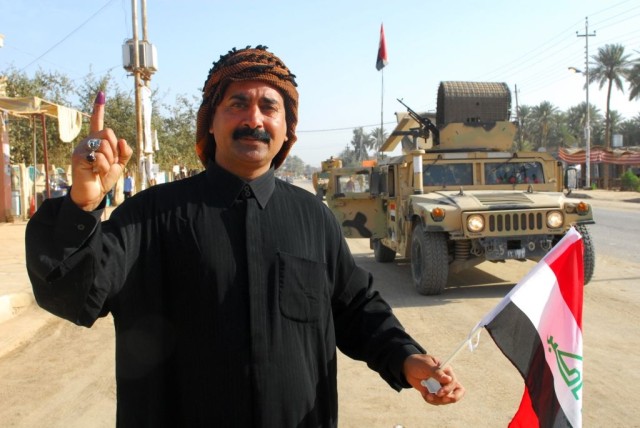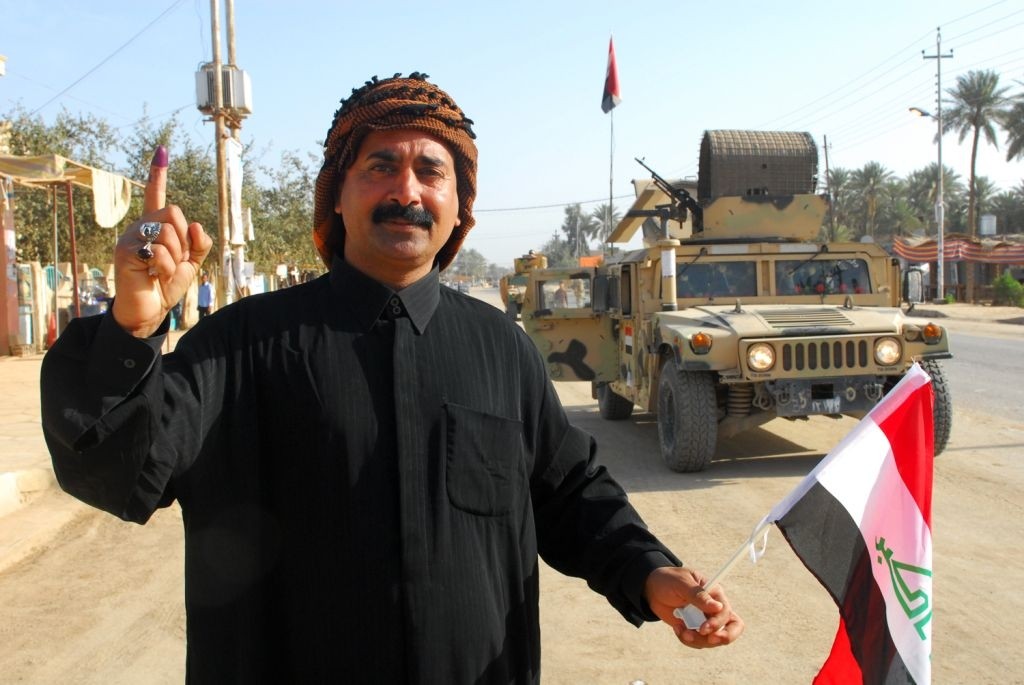BABIL PROVINCE, Iraq (Aug. 6, 2010) -- The U.S. Army has seen significant technological, doctrinal and structural changes within the past decade.
The latest adaptation, turning Brigade Combat Teams into Advise and Assist Brigades, reflects tremendous developments in the Iraqi Security Forces and a major change in emphasis for U.S. Soldiers in Iraq.
The role of the AABs is precisely what the name insinuates: advising ISF locally and nationally, and providing them a logistical safety net, as well as assisting with governmental and private initiatives through mentorship and funding.
This requires the AAB to work closely with Iraqi leadership and the U.S. State Department's Provincial Reconstruction Teams.
In the past, the PRTs worked with U.S. Army civil affairs units attached to the brigades and had little direct contact with the units, said Bob Wong, public diplomacy officer, Babil PRT, a native of Eustis, Fla.
Now Wong works directly with the 3rd Heavy Brigade Combat Team, 3rd Infantry Division, which has responsibility for operations in Babil and four neighboring provinces.
"The company commanders I've met, they're intuitively people-persons," Wong said. "They seem to understand, intuitively, what they're trying to do, which is basically talk to the leadership, listen to the leadership."
Lt. Col. Greg Politowicz, deputy team leader for the Babil PRT, has spent the past seven years in Army civil affairs and has previously deployed to Iraq in that capacity.
"They, in my opinion, put the good, smart people in there and trained them well, so that when I go out to any one of the different [operational environments] within the brigade, within the battalion, I find that the captains, lieutenants, sergeants and so forth are working very well and smart," said the Fayetteville, N.C. native. "They know what to do, they've been educated."
"It's civil affairs teams out there, except they happen to be called 'companies' and 'AAB,'" he said.
Preparing these combat-arms Soldiers to operate as civil affairs professionals started while the 3rd HBCT was training for the deployment at the National Training Center at Fort Irwin, Calif.
The training center mimicked Iraq as much as possible, down to the bases they lived in, according to Maj. Gary Bantad, the 3rd HBCT civil affairs officer, a Virginia Beach, Va. native.
As part of the rotation, the brigade Soldiers visited villages with simulated local citizens, met with "provincial councils," worked with U.S. State Department officers acting as a PRT, and paid for (with fake money) and managed projects, he said.
Stability operations are simply a part of the Army's function, Bantad said.
"I think we're pretty good at doing it, this brigade in particular," he said.
But civil capacity is not the entire picture, and the experience of the brigade's combat veterans is just as important to their mission.
As the ISF has taken up the responsibility for the security of the country, members of stability transition teams have been assigned to work directly with ISF leadership at different levels, Bantad said.
These specially-trained advisors are similar to the military transition and border transition teams of the past, but are organic to the brigades.
It may sound like a small change, but Capt. Michael Washburn, commander of Company A, 2nd Battalion, 69th Armor Regiment, 3rd HBCT, who worked as a member of a BTT in 2005 in northern Iraq, said the impact has been notable.
"What I experienced on the BT Team prior to it coming down to a brigade level was that, since we had no unit we really fell under, getting the materials, personnel and the support we needed to do our job effectively just wasn't there," said the Yorktown, Va. native.
"Now, you have a team or teams that can do direct coordination for support when it comes to equipment and personnel to get the job done," he said.
In his current role advising the Iraqi Army's 2nd Battalion, 31st Brigade, Washburn has a front-row seat to the changes in the ISF.
"We're doing a lot of joint patrols, to keep that partnership, but they're doing a lot more patrols on their own, which is a sign of them being able to run their area of operation without [U.S.] support." he said.
Captain Matt Hunter, commander of Company C, 2/69 Armor, is on his third Iraq deployment, with his first as a platoon leader from 2004-2005.
"We've really been able to step back and allow the IA to take the lead," he said. "From where they were in 2005, to where they are now, is leaps and bounds ahead. Our 'Advise and Assist' is really just checking in with them and making sure that they have all the support they need to conduct operations."
"They've gotten that system down where they train their own and they're very competent and independent and they've got a lot more pride in themselves as an organization," Capt. Hunter said. "As Iraqi Army units, they're very proud of what they do."
Col. Pete Jones, commander of the 3rd HBCT, said the development of the ISF has been key to the transition to an AAB role.
"The Iraqi Security Forces have truly taken the lead, demonstrated by the national elections and religious holidays, most recently Sha'baniya, where they provided security for over 3 million religious pilgrims to Karbala," he said.
The Iraqi people share that confidence in the ISF, said Tanya Thompson, team leader for the human terrain assessment team in Babil, which is responsible for gauging the public's attitude on issues.
"The response was pretty unanimous that they feel that security has increased under the Advise and Assist Brigade, rather than under combat operations," said the Saddle Brook, N.J. native. "All the way up and down, I think that the feeling is that they're really ready to take over; they're ready for us to go."


Social Sharing